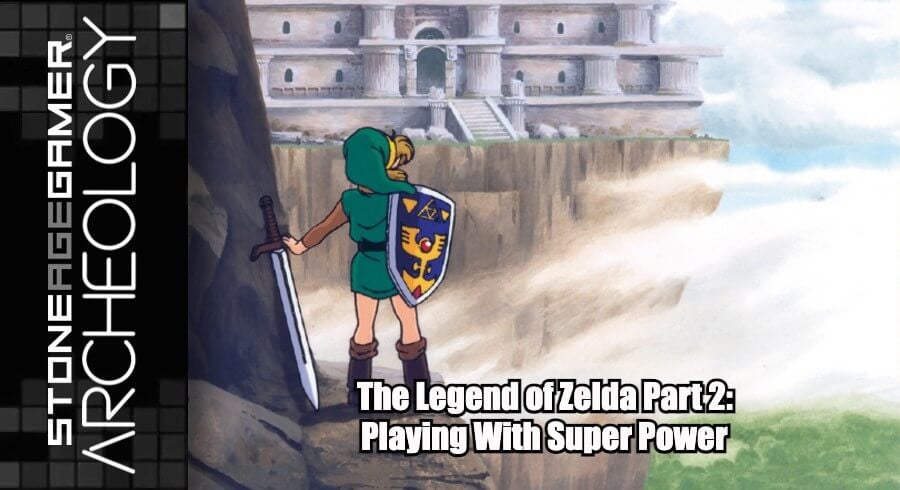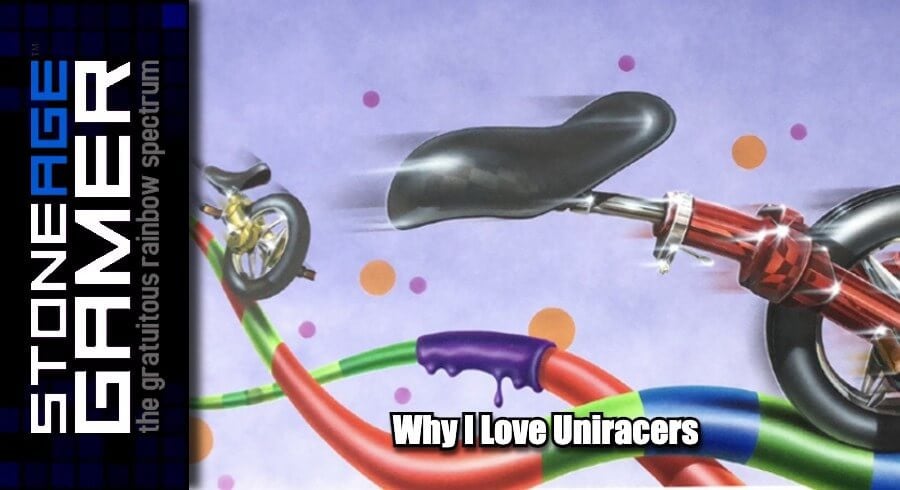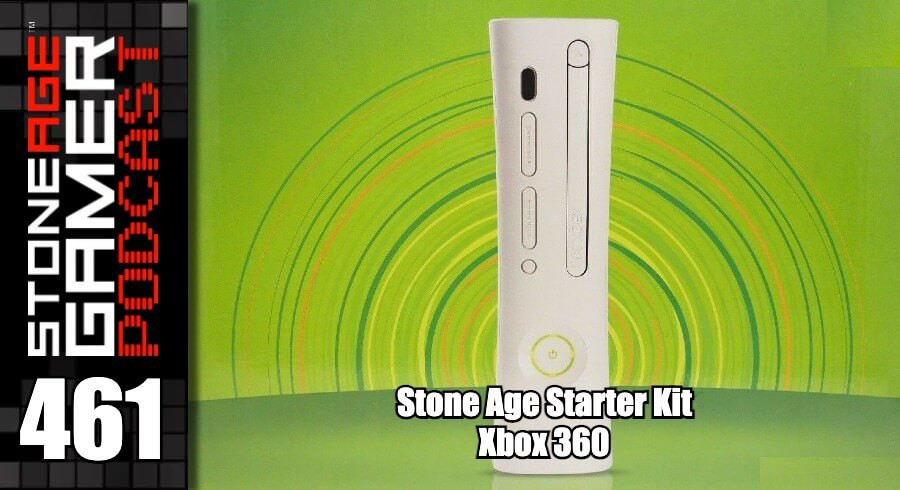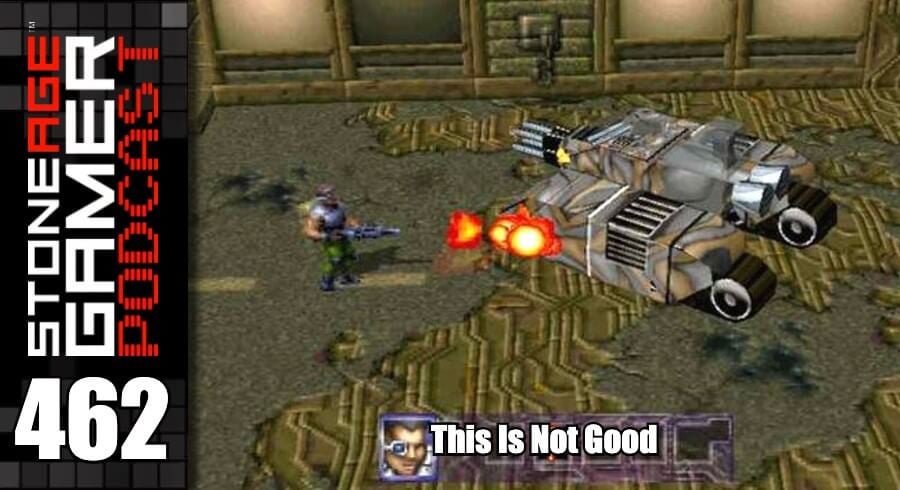
The Legend of Zelda Retrospective Part 2 - Playing With Super Power
Welcome to Part 2 of our 8-part Zelda retrospective. In this series, we aim to tell the story of the Zelda series as it unfolded for North American audiences. We are not only looking at the games themselves, but the historical context surrounding them, and what it was like being a fan as these games were being released.
In this episode, we cover the series' move to 16-bits and all the amazing changes that came with it. Plus, Link's first proper portable adventure, and the weird and wonderful world of Zelda on CD-i.
Transcript of the video
By the time The Legend of Zelda and Zelda II: The Adventure of Link were at the height of their popularity, Nintendo was the undisputed market leader in North America. But by the dawn of the 1990s, the gaming landscape had changed considerably. Nintendo now had competition, most notably from Sega who had started carving out a serious foothold in the gaming market with their 16-bit Genesis console.
In the January 1991 issue of Nintendo Power, Nintendo gave fans their first glimpse of what their own 16-bit machine, the Super Nintendo Entertainment System, would be capable of, with a particular spotlight on Super Mario Bros. 4: Super Mario World. This set imaginations running wild wondering what other Nintendo series might be like with the power of 16-bit hardware behind them, but one question loomed above all else, what was next for The Legend of Zelda? Six months later, they would get their answer. In the July 1991 issue of Nintendo Power, on the back of the fold out poster for Metroid II was a single screenshot for a game called Zelda III.
The wait for new information was agonizing for many fans as the internet wasn’t widely available back then, and video game magazines typically only published once a month at best. By the time the Super NES launched in North America in August 1991, Nintendo had only officially released a total of three screenshots for the game. Very little information could be gleaned from these images, but a few things were obvious right away. The game had shifted back to an overhead perspective, and it was going to be absolutely gorgeous.
In the January 1992 issue of Nintendo Power, Nintendo published the first chapter of a comic book adaptation for their upcoming new Zelda game. This, in addition to a consistent stream of new screenshots and information from various outlets, fueled the unbelievable level of anticipation for players to finally take control of Link once again. And just like before, nothing could have prepared them for what awaited when they plugged in their cartridges and turned them on.
The Legend of Zelda: A Link to the Past released in April 1992 and exceeded even the loftiest of expectations. The game delivered in every way a proper sequel should, by combining the best of what came before it to create something new yet familiar at the same time. It played largely like an evolution of the original Legend of Zelda especially in terms of camera perspective, but several of the advancements made in Zelda II were also taken into consideration. Link once again had to manage a magic meter and spells. Non-player characters inhabited their own homes and spoke to Link when prompted. And unlike the original’s game’s open world approach, this was a more guided experience, giving players a much clearer idea about what to do next.
Also like Zelda II, A Link to the Past came with even more of a story than before with the first several pages of the instruction manual dedicated to a richly detailed explanation of the history of Hyrule, and the Triforce itself.
Long ago, the Triforce existed in its own realm known as the Golden Land. Utilizing black magic, a gang of thieves found their way in, and their leader, Ganondorf Dragmire, found and took the Triforce for himself.
Now known as Ganon, he waged war on Hyrule. But seven wise men were determined to stop him. The people of Hyrule forged a blade with the power to repel evil, which came to be called The Master Sword. As the wise men searched for someone worthy of wielding this weapon, Ganon and his minions launched a devastating attack. It was then that the seven wise men managed to seal Ganon in the Golden Land, bringing an end to what was known as the Imprisoning War.
Centuries later, Hyrule fell on hard times until a mysterious wizard named Agahnim appeared to seemingly save the day. The King named him chief advisor, and the people of Hyrule thought their troubles were over. Agahnim, however, soon took control of Hyrule castle and began kidnapping maidens with the aim of freeing Ganon from his prison.
Like the original games, much of this story is told within the game itself, but where the NES titles featured mere text crawls, the power of the Super NES allowed for much more detailed storytelling.
It was a dark and stormy night, and Link was fast asleep. In his dreams, the voice of Princess Zelda contacted him and told him about Agahnim’s sinister plans. When he awoke, he saw his uncle heading out into the storm with a sword. Link followed him, and his next great adventure began.
Immediately players were able to test their new abilities. Link could now move diagonally, pick up and throw items, open treasure chests, and change elevations by jumping from ledges. The rain effect was stunning, and paired with the crisp visuals and moody music, the stage was set for a truly epic quest.
More new abilities were slowly introduced throughout the adventure, but none transformed the gameplay as much as the way Link wielded his sword. Where in previous games Link could only stab forward, he now swung in an arc that could damage in multiple directions at once. Combining this with Link’s new diagonal maneuverability was a massive step up over the original game’s rigid movement, and resulted in combat that felt more manageable than Zelda 1, but still rewarding like Zelda II. Dozens of new items, clever puzzles, and multi-tiered dungeons unfolded as Link set out to recover three sacred pendants in order to lift the Master Sword which resided in the Lost Woods. Once the Sword was found, players traveled back to Hyrule Castle to engage in what at first glance seemed to be the final battle against Agahnim. But upon his defeat, you learn that not only did you not finish the game, but you hadn’t even gotten through a third of it.
Link now had to find six crystals hidden throughout the Golden Land, which Ganon had transformed into the Dark World. This twisted version of Hyrule shared its basic iconography, but was distinct enough to keep players on their toes. The act of switching back and forth between Hyrule and the Dark World became the game’s defining trait, and opened up the world to intricate puzzles that inspired not only future Zelda installments, but other Nintendo franchises for generations to come.
The Legend of Zelda: A Link to the Past was a critical and commercial success, and is still commonly ranked among the best games ever made. It laid the foundation for what the rest of the series would build on for decades. And as always, players couldn’t wait to see what came next.
And just like before, it wasn’t at all what they expected.
A group of engineers at Nintendo had been toying around in their off time to create a Zelda style game for the Game Boy, Nintendo’s new handheld gaming device. As development progressed they eventually asked permission to turn it into an official handheld remake of A Link to the Past. This soon morphed into its own unique project, which ultimately became Link’s first proper portable outing.
The Legend of Zelda: Link’s Awakening released in the US in August 1993. On the surface, it bore more than a slight resemblance to A Link to the Past, including its nearly identical box art, general visual design, and basic gameplay. But upon booting up the game, it was immediately obvious that this was no mere port. Players were greeted by the most detailed image of Link ever seen in-game as he struggles to sail through a terrible storm. After lightning strikes his raft, he washes up on the shore of a mysterious island where he’s rescued by a familiar-looking girl.
He soon learns that this island is called Koholint, and the girl’s name is Marin. According to the locals, nobody can leave Koholint without waking something called the Wind Fish, which lies sleeping in a giant egg on top of a mountain at the center of the island. Once you leave Marin’s house in search of your sword, it quickly becomes apparent that this is no normal Zelda game. You encounter a “dog” named Bow Wow that is clearly a Chain Chomp from Super Mario Bros. 3, and the urchins on the beach look suspiciously like Gordos from Kirby’s Dream Land. When you find your sword it has your name engraved on it, as does your shield, and the citizens of Mabe Village seem to be weirdly self aware, informing you about things like how to save your game while not knowing what that means, and even telling you to keep an eye out for when they’re lost in the mountains later. Link’s Awakening was truly something different.
Thanks to the limitations of the Game Boy hardware, the world once again had to be traversed one screen at a time, and since the Game Boy only had two face buttons to work with, inventory management was once again limited to just two slots. This time though, both slots could be used to assign items, which allowed for some fun combinations, including ones that didn’t involve Link’s sword.
Multi-tiered environments were back, but instead of just jumping down from ledges, Link could now jump at will thanks to an item called Roc’s Feather. Also like Zelda II, or more specifically the brief underground areas in Zelda 1, there were occasional side scrolling segments. These actually had more in common with Super Mario Bros., not just because of the degree of platforming they required players to master, but because they featured literal Goombas, Piranha Plants, and Cheep Cheeps to contend with. Characters from Kirby, SimCity, and even the Japan exclusive The Frog For Whom the Bell Tolls were scattered throughout Koholint, whose lore seemed to have a lot to do with dreams, including a cameo from none other than Wart, the dream stealing villain from Super Mario Bros 2. As both Link and players would eventually learn, the implications of this were considerable.
The story of Link’s Awakening was very different from any Zelda game before it. You weren’t out to rescue a princess from Ganon, and there was nary a mention of the Triforce. Link was just trying to get home. But the further players went into the adventure, the more they realized that this wonderful world they were a part of might just all be a dream, and if they wake up, or wake the Wind Fish, every living thing on Koholint would cease to exist. This was made all the more heartbreaking thanks to just how endearing the inhabitants of Koholint are, especially Marin with whom Link becomes friends.
The details of the game’s bittersweet ending are open to interpretation, but they left a lasting mark on Zelda fans, while also expanding just what a Zelda game could be. This, combined with its stellar soundtrack by Kazumi Totaka, complex puzzles, and massive detailed world by Game Boy standards, cemented Link’s Awakening as a fan favorite in the series, and once again left players eagerly awaiting what was next for the hero of Hyrule.
What they didn’t know was that more Zelda was on the way far sooner than they could have imagined, and from a place nobody would suspect.
Back in 1988, Nintendo partnered with electronics giant Sony to begin development of a CD-ROM add on for their then upcoming Super Famicom platform. This partnership resulted in the development of the Super NES CD-ROM, also known as the Nintendo PlayStation. Nintendo’s partnership with Sony soured though, so Nintendo turned to their rival Philips instead. This relationship too went south, and in December 1991, Philips released their own CD-based machine, the CD-i. It was a multimedia device designed to work as a central hub for movies, music, pictures, and of course video games. Thanks to their previous contract with Nintendo, Philips found themselves with a brief window to create original games using Nintendo’s IPs. This resulted in a series of bizarre titles featuring Nintendo’s most iconic characters that were never released on Nintendo platforms and didn’t have any official involvement at all. One was a Mario game. The others were based on The Legend of Zelda.
Link: The Faces of Evil was released in October 1993, just two months after Link’s Awakening for Game Boy. However, since Nintendo was in no way involved, Developer Animation Magic, who was already inexperienced in creating this kind of game, wasn’t privy to the newest developments in the Legend of Zelda series.
All they had to go on was what was out in the world already, and they drew inspiration from both Zelda II: The Adventure of Link and the Legend of Zelda cartoon.
CD-i games weren’t typically covered much in video games media at the time, so a large portion of what the general public knew of Faces of Evil came from a Philips CD-i infomercial that often aired in the US. In it, a man named Phil is convinced that he can learn the meaning of life if he buys a CD-i. One of the games he is given to convince him of this is Link: The Faces of Evil.
While it’s easy to look at this today and focus on its lack of quality, back in 1993, this was still fairly impressive, especially to children who grew up on the NES games and the animated series. It featured full motion video sequences with voice acting, and CD-quality sound. While the art direction no doubt looked a bit off, thanks to the series pedigree, fans had reason to believe it played better than it looked.
The game begins when Link and the King of Hyrule are informed by a traveling wizard that Ganon had conquered the neighboring kingdom of Koridai, and that Link was the only one who could defeat him. He then set out on a quest to defeat the evil king’s minions who were holed up in large stone statues called the Faces of Evil, and free the citizens of Koridai from Ganon’s rule.
Faces of Evil in no way lived up to the quality standards fans had come to expect from The Legend of Zelda, but the game wasn’t without its merits. It turned the perspective on its side again like Zelda II, though it dropped most of its RPG elements. There was a large map that you could navigate with a cursor and enter various areas featuring a number of monsters, shops, and other characters that Link could interact with in order to solve puzzles and advance the story. Unfortunately, controls were laggy and clunky, and enemies could deal catastrophic amounts of damage in less than a second. Objectives were unclear, and even the simplest of tasks quickly became a chore to complete. It was bad, and it wasn’t alone.
On the same day, a second Zelda game called Zelda: The Wand of Gamelon, also released. This time, The King of Hyrule had traveled to the kingdom of Gamelon to offer aid in their fight against Ganon’s forces. When he didn’t return, Zelda tasked Link with rescuing the King, but Link too vanished. So for the first time in the series, Zelda herself took up arms and ventured forth to save both her father and Link.
Though the protagonist was different, the gameplay in Wand of Gamelon was nearly identical to Faces of Evil, only with different areas, items, and story elements to explore.
While neither one of these games should be considered good, they were both admirably ambitious. They featured high quality box art with imagery invoking the look of A Link to the Past, and some of the environments in-game contained detailed animations that made them feel alive. The characters you encountered throughout were indeed strange, but also quite creative, and while the music never reached the heights of Kondo’s or Totaka’s legendary scores, it was still pretty good on its own. Even with the hardware’s extreme limitations, the team's inexperience, and the complete lack of guidance from Nintendo, Faces of Evil and Wand of Gamelon still stand as a fascinating, if tragically flawed piece of Zelda’s history.
Following this, The Legend of Zelda entered its longest drought period ever in the US. In Japan there was a game for the Barcode Battler II system based on A Link to the Past, and a number of releases for the BSX Satellaview, including a pseudo remake of the original NES Legend of Zelda, while over in Europe there was a third Zelda game on CD-i called Zelda’s Adventure which featured live action cutscenes, an overhead perspective, and is widely considered one of the worst video games ever made. But here in the US, there wasn’t a new game in the Legend of Zelda series released for five years. The wait though, would ultimately prove to be worth it.
Join us next time when video games go 3D, and Zelda once again redefines the genre with what is widely considered one of the most beloved games of all time.





